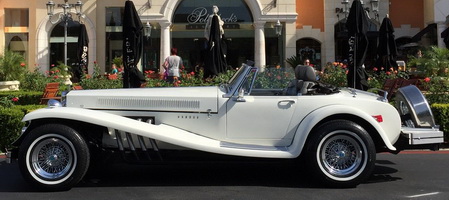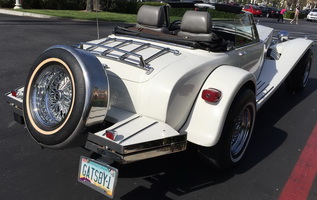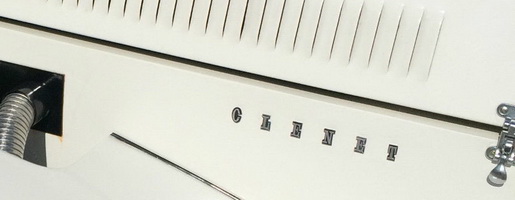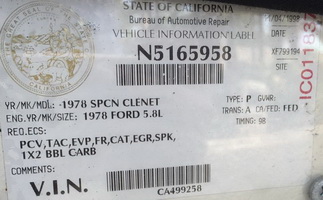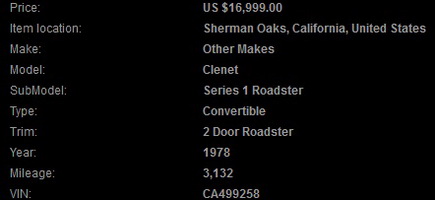Advice to Clenet Buyers
The ancient Romans had a useful bit of business advice. In Latin: Caveat emptor. In English: Buyer beware. This is understood today as the principle that the buyer alone is responsible for checking the quality and suitability of goods before a purchase is made.
Buying an automobile is often a major investment. For some people, buying a car is the most expensive purchase they will ever make. It makes sense to do thorough research before you spend serious money for a car.
This is particularly important when buying a Clenet. The car is decades old, yet it is still quite expensive, especially if it has low mileage on the odometer and has been well maintained. Even the fact that a certain celebrity once owned the particular automobile you are considering may be an important factor in determining its value.
It may sound odd, but perhaps the most important task you have is to make certain that the car you are considering is in fact a Clenet!
Only around 500 Clenets were built at the Clenet Coachworks factories in California. But thousands (or millions?) of people really like these cars. When you drive your Clenet, you will be noticed! (If you want to sneak away without being seen, buy a different car.) So there has long been an active market in cars that look like Clenets but were not built by Clenet Coachworks. Some of these cars were well made and look nice, and you may really enjoy buying and driving them. If you decide that you really want a Zimmer, a Gatsby, an Excalibur, a Sparks, or some other neoclassic car, buy it and enjoy it! But if you believe you are buying a Clenet, and learn later that it is not really a Clenet, you may be unhappy.
To get a feel for the problem, enter "Clenet" into your favorite image search engine (Google, Yahoo, etc.). Mixed in with many true Clenets, you may see cars such as these:
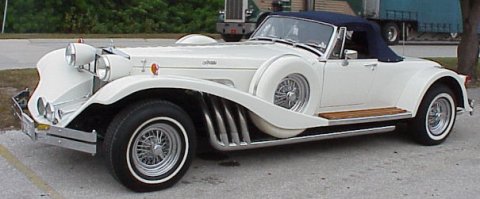
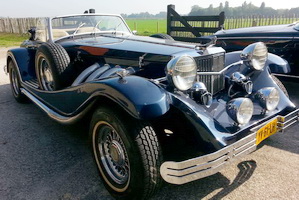
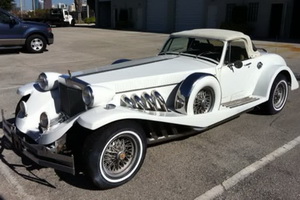
In many ways, these convertibles look like a Clenet Series I, with four pipes on each side, running board, etc. But there is one major difference. No true Clenet was ever manufactured with side-mounted spare wheels, and we are not aware of any Clenet owner modifying his true Clenet to have spare wheels on the sides. These cars were never Clenet Coachworks products. The first two were manufactured in small numbers by Ron Sparks Coachbuilders in California between 1979 and 1985. The third car is a Johnson Presidential Roadster. It has a rumble seat and was built in Florida in the 1980s. You may like these cars and decide to buy one. But they are not cars built by Clenet Coachworks.
Now look at a car without sidemounted spare wheels, that again looks very much like a Clenet Series I.
Yes, it does looks much like a Clenet Series I. It says CLENET right on the side. And the word CLENET appears in the official State of California Vehicle Information Label. The website advertisement shows Clenet and Series 1 Roadster.
So it must be a product of Clenet Coachworks Inc., right?
Well, remember the first line of this article. Caveat emptor! Let's look a little closer at the information presented.
The car has 3,132 miles on the odometer. That is very low mileage for a car built in 1978. Why is the owner only asking for $16,999? Should he be asking for $50,000 or more for a Clenet in virtually dealer showroom condition?
Also notice that in the ad, the Make line says "Other Makes". If the car was manufactured by Clenet Coachworks Inc., it should say that. The next line says the Model is "Clenet". True Clenet models are Series I Roadster, Series II Cabriolet, etc.
Now look at the license plate. In many (all?) states of the USA, you can pay extra money when you register your vehicle if you want to choose the letters and numbers that will appear on your license plate. Why would the owner choose "GATSBY1" for his license? The obvious answer is that the owner was proud of his Gatsby car. Yes, Gatsby Coachworks was a manufacturer of neoclassic automobiles in the same era that Clenet Coachworks was building Clenets. Some of these cars were produced at the factory, and some were produced as kits, which buyers used to modify their cars to look like neoclassics. Had he bought a Clenet, he would probably have tried to have his license plate include letters that were significant to Clenet owners.
Also, the VIN is not a number that would come from Clenet Coachworks. It looks more like a number that the State of California would assign, as it starts with CA, normally meaning California.
And finally, the build number is not shown in the ad. While some dealers may not understand the significance of including the build number in a Clenet ad, a Clenet owner should know the importance of this detail. When you read the full ad, the first sentence says, "I have for sale my 1978 Clenet." Really? In a lengthy ad that talks about the history of Clenet Coachworks, celebrities who bought Clenets, and which TV show characters drove Clenets, the seller did not remember to mention the build number? Something is not right.
If you are considering buying this "Clenet", please examine the documentation very carefully first. If the seller has solid documentation that you can trust, that proves it is indeed a Clenet Coachworks product, manufactured in a Clenet Coachworks factory, then please send copies of that documentation to info@dimoramotorcar.com, INCLUDING THE BUILD NUMBER!! Thank you.
